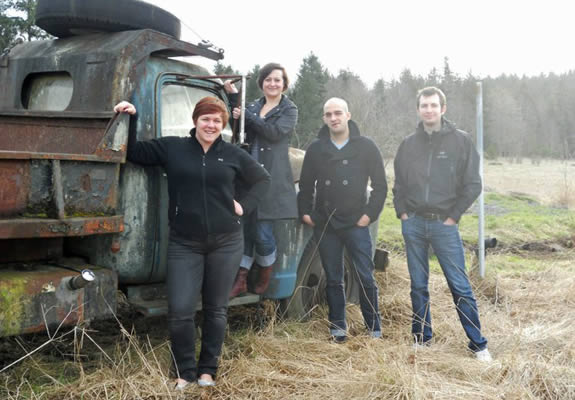
Menu:
Overview
I started brewing in September of 2009. I decided I needed a new hobby and brewing sounded like a good choice. I put together this site to document the different drinks I have made; hopefully there is enough information that someone else can recreate any of them.
The list below shows some information to keep in mind while brewing or reading over my notes. For the most part these points are true for all of my batches unless stated otherwise:
- Clean everything really well. Even after touching my phone to start or stop a timer I will wash my hands. Anything I have cleaned I will set on paper towels so it doesn't touch the counter.
- Alcohol content means alcohol by volume. Anywhere I talk about the alcohol percentage I am talking about ABV.
- "Ounce" means mass, "fluid ounce" means volume.
- Batch size is five gallons.
- Preparing the yeast and aerating: I have made batches where I prepared the Wyeast packet several hours before pitching, but usually I don't. I have aerated the wort before pitching the yeast, but usually I don't. I have never made a starter for dry yeast. I haven't noticed a significant difference in the amount of time it takes for fermentation to start, maybe this is because of the effort I put into keeping everything very clean.
- Vodka in the airlock: I put cheap vodka in the airlock to prevent anything from growing in it. The Vodka will slowly evaporate so you might need to top it off occasionally.
- Water usually means bottled spring water. I was told the nutrients in spring water are better for brewing than filtered or distilled water. I have heard tap water is usually fine for anything that will be boiled, but since the cost of the water doesn't add much I just use bottled for everything.
- Specific gravity measurements are corrected for temperature, this means it is what the specific gravity would be if it was measured at 59 degrees Fahrenheit.
- Fermentation temperatures are ambient, which usually means somewhere between 60 and 70 degrees Fahrenheit.
- To cool the wort in a sink, do not first transfer the contents to the fermenting bucket. The thermal conductivity of the plastic bucket is much lower than a stainless steel pot; it will take a long time to cool in the plastic bucket.
- I usually wait for the wort to cool to at least 80 degrees Fahrenheit before adding the yeast, but I have added it as high as 90 with no problems.
- For specific gravity calculations I use this calculator for temperature corrections and this calculator to find the alcohol by volume percentage.
The image below shows me with some friends in Redmond, WA taking a tour of the Mac & Jack's Brewery.

Photo: Ian, Erik, Steven, Hans, Erin, Mathias (left to right)
The image below shows me with some friends in Port Townsend, WA on a trip to visit a couple of cideries.

Photo: Lauren, Kerry, Steven, Erik (left to right)